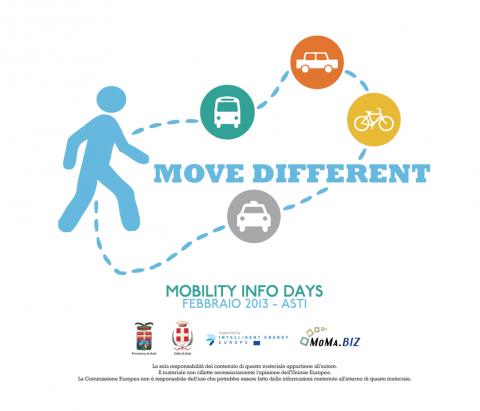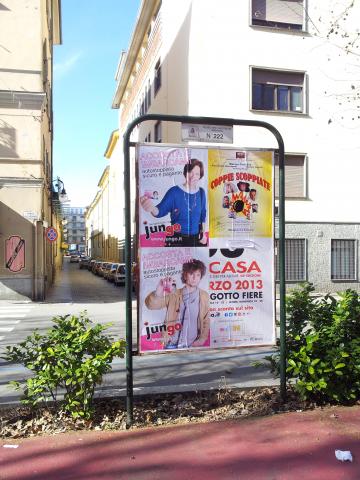The BIZ of Corso Alessandria is situated just outside the town of Asti (pop 75,000), Italy, along the national road that connects Asti with Alessandria (SS10) and with the motorway Torino-Brescia (A21). The centre of the BIZ is approximately 3 kilometres from the town centre and the train station of Asti.
The BIZ of Corso Alessandria is characterised by the presence of a high number of medium-small companies and a few companies with more than 200 employees. The BIZ includes manufacturing activities as well as commercial and managerial.
Currently there is no organisation of any type in charge of its management and promotion that could also represent the companies located in it. The Municipality of Asti is the only body with decisional, organisational and executive power for the development, maintenance and management of the BIZ.
As regards the employees working at the BIZ around 50% of them live in Asti
whereas the remaining 50% lives in towns and villages surrounding Asti.
Discover more about Asti and Moma.BIZ
Facts Regarding the BIZ | |
Surface | 2,96km2 |
Nr of companies | 281 |
Nr of employees | 2616 |
The industrial zone was selected in 1974 with the approval of the first town planning scheme. At the time the urban development department identified vast areas to be dedicated to industrial development in the perimeter of the residential area and along the main roads of access to the city. As a result the BIZ is characterised by different types of traffic:
· home-work trips of the employees working in the BIZ;
· trips of the clients of the companies present at the BIZ;
· continuous traffic of vehicles (both cars and heavy vehicles) going to and leaving the town of Asti (due to the presence of the SS10 and A21).
The existing public transport service at the BIZ of Asti is made up of an urban bus line which is part of the local public transport of Asti organized and financed by the local authorities, namely Region of Piedmont and Municipality of Asti, and six suburban lines, organized and financed by the Province of Asti.
The most common mode of transport used for reaching the BIZ of Asti is the private car. The reason behind this choice can be attributed to a number of reasons:
- The location of the BIZ along one of the main roads of access to Asti and with the A21 motorway exit right in its centre makes it easily accessible by car from any location outside Asti.
- The presence of free parking space.
- The presence of just one bus line that connects only part of the BIZ with the city centre in an inefficient way.
- The fact that the suburban lines that connect the BIZ with towns and villages around Asti are characterised by a very low frequency.
- The lack of pavements, bike lanes and traffic lights that enable the safe crossing of the road on Corso Alessandria.
Modal Split Before the Project Implementation |
Public transport (bus): 6% Private car (driver): 75% Private car (passenger): 4% Carpooling: 1% Motorbike: 4% Train: 4% Combined (car + train or bus): 2% Foot: 1% Other: 2% |
The Mobility Plan
The information of the background study and the mobility survey, as well as the meetings with the LMG indicated three areas of intervention in the case of Asti:
- Improvement of the existing public transport service.
- Provide alternatives for the employees that travel from towns other than Asti.
- Awareness raising on the alternatives modes of transport present in the BIZ and on sustainable mobility in general.
More specifically, the measures implemented in the BIZ include:
- Collective TaxiBus service aiming to offer a flexible transport alternative to employees whose current needs of transport are not met by the existing bus service. It also serves as a “safety net” for employees that come to work using the carpooling arrangements and who might need to get home at different time than planned.
- Improvements in the timetable of the existing public transport service.
 Real time information on the existing public transport that serves the BIZ as well as the town of Asti (i.e. trains, suburban public transport) with the aim to promote better use of public transport and enable intermodality.
Real time information on the existing public transport that serves the BIZ as well as the town of Asti (i.e. trains, suburban public transport) with the aim to promote better use of public transport and enable intermodality.- Activation of Jungo, the safe carpooling initiative, for the employees of the BIZ.
- Promotion of cycling through the collaboration with the EU project Naviki and the creation of a web page dedicated to cycling in Asti (http://www.naviki.org/it/asti/puntodipartenza/).
- Mobility information days aimed at promoting the existing alternatives to private car for the home-work trips and for creating a culture on sustainable mobility among the employees.
- Study and proposal of a more efficient bus line (Express Line 3) for the BIZ.
The Mobility Plan also identified measures for future implementation following the end of the project:
- The creation of pedestrian-bicycle lane on Corso Alessandria.
- The activation of the Express Line 3.
- The promotion of Teleworking among the companies.
- The creation of safe bike racks at the companies.

- The use of incentives for the promotion of sustainable mobility among the employees.
- Activation of Bike Sharing and Car Sharing services at the BIZ.
- Promotion of the “Smart PA” initiative at the companies of the BIZ (initiative that allows the employees to gain access to Public Authority services with the use of their company badge without having to get to the PA offices).
The Impact
MoMa.BIZ and the measures implemented in the case of Asti have considerably improved the mobility options of the people working in the BIZ of Corso Alessandria. A flexible public transport service that covers the entire BIZ is now available in the form of the collective TaxiBus. The timetable of the existing bus line has been extended in order to meet the needs of the employees. Employees living outside Asti are encouraged and enabled to carpool or combine several modes of public transport (co-modality) to get to work. Therefore a modal shift from private car to sustainable modes of transport for the home-work trips is expected.
In addition, the project has managed to promote the sustainable mobility culture at the local level and especially within the local authorities. An example of that is the official endorsement of the Mobility Plan of the BIZ by the Municipality of Asti, in recognising the mobility issues of the area and of the need to implement the plan in order to address them.
